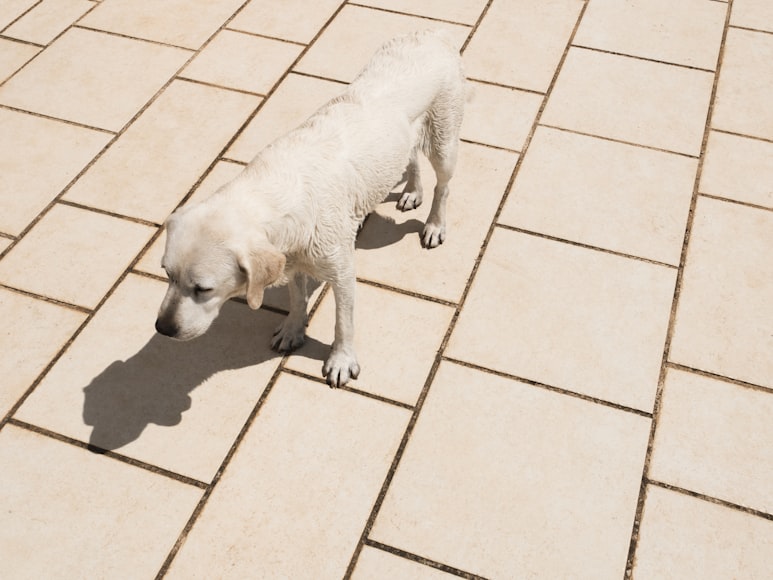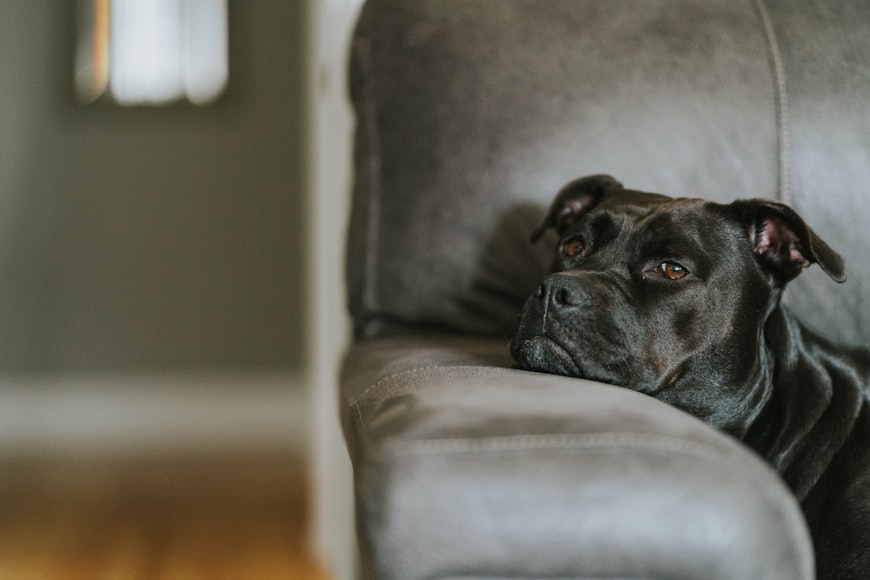I. Safe and Natural Laxatives

Constipation in dogs can be a frustrating and uncomfortable issue for both the dog and their owner. While it’s best to consult with a veterinarian before administering any laxatives, there are some safe and natural options that can help relieve occasional constipation.
Safe and Natural Laxatives
1. Cooked Pumpkin:
Pumpkin is a natural source of fiber, which can help bulk up the stool and make it easier to pass. It’s best to give your dog canned pumpkin puree, as fresh pumpkin can contain harmful bacteria. Start by mixing a tablespoon or two of canned pumpkin into your dog’s food daily. You can gradually increase the amount to two to four tablespoons, depending on your dog’s size and tolerance.
2. Fiber Supplements:
Fiber supplements, such as powdered psyllium, can also help add bulk to the stool. These supplements can be sprinkled onto your dog’s food or mixed into water. Start by giving your dog a small amount, such as half a teaspoon, and gradually increase the dose as needed.
Other Tips for Relieving Constipation
In addition to giving your dog a laxative, there are some other tips you can follow to help relieve constipation:
- Increase water intake: Encourage your dog to drink plenty of water, as staying hydrated can help soften the stool.
- Exercise: Regular exercise can stimulate the digestive system and help prevent constipation.
- Avoid table scraps: Fatty and processed foods can be difficult to digest and may contribute to constipation.
- Consider a change in diet: A diet high in fiber and low in fat can help prevent constipation. Consult with your veterinarian about the best diet for your dog.
When to See a Veterinarian
If your dog’s constipation is severe or persists for more than a few days, it’s important to consult with a veterinarian. There may be an underlying medical condition that requires treatment. The veterinarian may recommend a stronger laxative or other therapies to address the constipation.
Precautions:
- Always follow the recommended dosage instructions for any laxatives you give your dog.
- Do not give your dog human laxatives without consulting with a veterinarian.
- If your dog has a history of diarrhea or any other digestive issues, avoid giving them laxatives without consulting with a veterinarian.
- Monitor your dog closely after giving them a laxative to ensure they have a bowel movement and do not experience any adverse effects.
By following these tips, you can help your dog relieve constipation and maintain a healthy digestive system. Remember, it’s always best to consult with a veterinarian before administering any laxatives or making any significant changes to your dog’s diet.
II. Over-the-Counter Laxatives

Constipation is a common problem in dogs, and it can be very uncomfortable for your pet. If your dog is straining to defecate, producing hard or dry stools, or going more than a few days without a bowel movement, they may be constipated.
There are a number of over-the-counter laxatives that can be used to relieve constipation in dogs. However, it is important to talk to your veterinarian before giving your dog any medication, as some laxatives can be harmful to dogs.
Over-the-Counter Laxatives
The following over-the-counter laxatives are generally safe for dogs:
- Milk of magnesia: Milk of magnesia is a gentle laxative that can be given to dogs orally. The recommended dosage is 1-2 tablespoons per 20 pounds of body weight, given once or twice a day.
- Enemas: Enemas can be used to relieve severe constipation. Enemas are not as commonly used as oral laxatives, but they can be effective in cases where oral laxatives have not worked. Enemas should only be given by a veterinarian.
Natural Laxatives
There are also a number of natural laxatives that can be used to relieve constipation in dogs. These include:
- Pumpkin: Pumpkin is a good source of fiber, which can help to bulk up stools and make them easier to pass. You can give your dog canned pumpkin or cooked pumpkin. The recommended dosage is 1-2 tablespoons per 20 pounds of body weight, given once or twice a day.
- Bran: Bran is another good source of fiber. You can add bran to your dog’s food or give it to them as a treat. The recommended dosage is 1-2 tablespoons per 20 pounds of body weight, given once or twice a day.
- Yogurt: Yogurt contains probiotics, which can help to regulate the digestive system. You can give your dog plain yogurt or yogurt with fruit. The recommended dosage is 1-2 tablespoons per 20 pounds of body weight, given once or twice a day.
Preventing Constipation
There are a number of things you can do to help prevent constipation in your dog, including:
- Feed your dog a healthy diet: A healthy diet will provide your dog with the nutrients they need to stay regular. Avoid feeding your dog table scraps or fatty foods, as these can contribute to constipation.
- Make sure your dog gets plenty of exercise: Exercise can help to stimulate the digestive system. Take your dog for walks or runs every day.
- Provide your dog with plenty of water: Water is essential for good digestion. Make sure your dog has access to fresh water at all times.
If your dog is constipated, it is important to talk to your veterinarian to determine the underlying cause. Your veterinarian may recommend a laxative or other treatment to help relieve your dog’s constipation.
III. Prescription Laxatives

Constipation, the difficulty or inability to pass stool, is a common issue in dogs that can cause discomfort and even health risks if left untreated. While there are various home remedies and over-the-counter options for alleviating constipation, certain situations may require prescription laxatives.
III. Prescription Laxatives
In severe cases of constipation or when other methods have failed, veterinarians may prescribe stronger laxatives to help stimulate bowel movements. These prescription-only medications typically contain active ingredients that work in different ways to soften stool and promote its passage.
1. Laxatone
Laxatone is a concentrated emollient laxative that is administered orally. It contains mineral oil and petrolatum, which act as lubricants to soften and coat the stool, making it easier to pass. Laxatone can be particularly helpful in cases of hardened stool or impactions.
How it Works:
- Lubricates the intestinal lining
- Softens and coats the stool
- Reduces friction during bowel movements
2. Lactulose
Lactulose is a synthetic disaccharide that is not absorbed by the body. It remains in the intestines, where it draws water into the stool, softening it and increasing its bulk. Lactulose is often used as a long-term laxative for chronic constipation.
How it Works:
- Osmotic laxative (draws water into the stool)
- Softens and bulks up the stool
- Stimulates bowel movements by increasing intestinal contractions
Administering Prescription Laxatives
Prescription laxatives should be administered exactly as prescribed by your veterinarian. Dosage, frequency, and duration of treatment will vary depending on the severity of the constipation and the specific medication used.
Important Considerations
- Follow the veterinarian’s instructions carefully.
- Do not give your dog laxatives more often than prescribed.
- Overuse of laxatives can lead to dehydration, electrolyte imbalances, and dependency.
- Monitor your dog for any adverse reactions or changes in their condition.
- If the constipation does not improve or worsens after administering the laxative, seek veterinary assistance promptly.
Preventing Constipation in Dogs
In addition to treating constipation, preventing it from occurring is crucial. Here are some tips:
- Feed your dog a balanced diet with plenty of fiber.
- Provide ample fresh water to prevent dehydration.
- Encourage regular exercise to stimulate bowel movements.
- Avoid feeding your dog bones or other objects that may cause obstructions.
- Monitor their stool frequency and consistency.
Conclusion
Prescription laxatives can be an effective solution for treating severe constipation in dogs. However, it is essential to consult with your veterinarian before administering any medications. By understanding the different types of laxatives available, their mechanisms of action, and potential risks, you can work with your veterinarian to ensure your dog’s digestive health and comfort.
IV. Foods to Avoid

Constipation is a common problem in dogs, causing discomfort and potentially leading to serious health issues. While laxatives can provide relief, it’s crucial to avoid certain foods and substances that can worsen the condition or pose safety risks.
IV. Foods to Avoid
1. Bones
Cooked bones, especially those from birds and fish, can splinter and cause damage to the digestive tract. They can also lead to blockages and perforations, requiring emergency veterinary attention.
2. Rawhide
Rawhide, a popular chew toy, is difficult to digest and can swell up in the stomach or intestines, causing blockages. It can also carry bacteria and parasites that can lead to infections.
3. Dairy Products
Most dogs are lactose intolerant, meaning they lack the enzyme to break down milk sugar. Consuming dairy products can cause digestive upset, including diarrhea and constipation.
Safe Laxative Alternatives
1. Pumpkin Puree
Pumpkin puree is a rich source of fiber, which can soften stool and promote bowel movements. It’s important to choose 100% pure pumpkin puree without any added sugars or spices.
2. Cooked Rice
Cooked white or brown rice provides soluble fiber that can help regulate digestion and relieve constipation. Mix a small amount of rice with your dog’s regular food.
3. Bran Flakes
Bran flakes are another good source of soluble fiber. Sprinkle a small amount on your dog’s food to promote regularity.
4. Psyllium Husk
Psyllium husk is a natural laxative that forms a gel when mixed with water. It can add bulk to stools and ease constipation. Consult with your veterinarian before giving psyllium husk to your dog, especially if it has diabetes or other health conditions.
5. Canned Dog Food
Moist canned dog food can provide extra hydration and lubrication, which can help soften stools. Choose high-quality canned food that is designed for dogs with digestive sensitivities.
When to Seek Veterinary Attention
If your dog experiences constipation for more than a day or two, has hard, dry stools, or shows signs of discomfort or straining, it’s important to consult with your veterinarian. They can rule out any underlying medical conditions and recommend appropriate treatment.
Conclusion
While laxatives can provide relief from constipation, it’s crucial to avoid certain foods that can worsen the condition or pose health risks. Safe laxative alternatives include pumpkin puree, cooked rice, bran flakes, psyllium husk, and canned dog food. Remember, persistent or severe constipation should be evaluated by a veterinarian to ensure your dog’s well-being.
V. When to Seek Veterinary Care

Constipation is a common problem in dogs, and it can be caused by a variety of factors, including diet, stress, and lack of exercise. While most cases of constipation can be treated at home with simple remedies, there are some cases where veterinary care is necessary.
Safe and Effective Laxatives for Dogs
If you are considering giving your dog a laxative, it is important to talk to your veterinarian first. There are a number of different types of laxatives available, and some are more appropriate for dogs than others.
Over-the-counter laxatives
Some over-the-counter laxatives that are safe for dogs include:
- Lactulose: This is a sugar-based laxative that is available in liquid or tablet form. It works by drawing water into the intestines, which helps to soften stools and make them easier to pass.
- Mineral oil: This is a petroleum-based laxative that is available in liquid form. It works by lubricating the intestines, which helps to make stools easier to pass.
- Fiber: Fiber is a natural laxative that is found in fruits, vegetables, and grains. Adding fiber to your dog’s diet can help to bulk up stools and make them easier to pass.
Prescription laxatives
If your dog’s constipation is severe, your veterinarian may prescribe a stronger laxative. These laxatives are typically only used for short periods of time, and they should not be given to dogs with certain medical conditions.
Natural Laxatives
There are also a number of natural laxatives that you can give your dog. These include:
- Pumpkin: Pumpkin is a good source of fiber, and it can help to soften stools and make them easier to pass.
- Yogurt: Yogurt contains probiotics, which are beneficial bacteria that can help to improve digestion and relieve constipation.
- Olive oil: Olive oil is a natural lubricant that can help to make stools easier to pass.
When to Seek Veterinary Care
If your dog is constipated, it is important to monitor them closely for any signs of distress. If your dog is vomiting, has diarrhea, or is bloated, you should seek veterinary care immediately. These can be signs of a serious medical condition that requires treatment.
Other Treatment Options
In addition to laxatives, there are a number of other things you can do to help relieve your dog’s constipation, including:
- Increasing your dog’s exercise: Exercise can help to stimulate the bowels and promote regular bowel movements.
- Changing your dog’s diet: A diet that is high in fiber can help to bulk up stools and make them easier to pass.
- Giving your dog enemas: Enemas can be used to remove impacted feces from the rectum.
If your dog’s constipation does not improve with home treatment, you should seek veterinary care. Your veterinarian may recommend additional tests to determine the cause of your dog’s constipation and prescribe the best course of treatment.
Conclusion
Constipation is a common problem in dogs, but it can be treated with a variety of safe and effective methods. If your dog is constipated, talk to your veterinarian about the best course of treatment for your pet.
VI. Prevention
Constipation is a common issue in dogs, and it can be uncomfortable and even painful for your furry friend. If your dog is constipated, you may be wondering what you can give them to help them move their bowels. There are a few different types of laxatives that are safe for dogs, but it’s important to talk to your veterinarian before giving your dog any medication.
Types of Laxatives for Dogs
There are two main types of laxatives for dogs: bulk-forming laxatives and stimulant laxatives. Bulk-forming laxatives work by adding bulk to the stool, which helps to stimulate the bowels. Stimulant laxatives work by irritating the lining of the intestines, which also helps to stimulate the bowels.
Bulk-Forming Laxatives
Bulk-forming laxatives are generally considered to be the safest type of laxative for dogs. They are made from natural ingredients, such as psyllium husk or cellulose, and they are not absorbed into the bloodstream. Bulk-forming laxatives can be given to dogs of all ages, and they are usually well-tolerated.
Stimulant Laxatives
Stimulant laxatives are more powerful than bulk-forming laxatives, and they should only be used under the direction of a veterinarian. Stimulant laxatives can cause side effects, such as diarrhea, vomiting, and abdominal pain.
Natural Laxatives for Dogs
There are also a few natural laxatives that you can give your dog. These include:
- Pumpkin
- Sweet potato
- Bran
- Yogurt
- Oatmeal
These foods are all high in fiber, which can help to bulk up the stool and stimulate the bowels.
How to Give a Dog a Laxative
If you are giving your dog a laxative, it is important to follow the directions on the package carefully. You should also give your dog plenty of water to help the laxative work.
When to See a Veterinarian
If your dog is constipated for more than a few days, or if they are experiencing other symptoms, such as vomiting, diarrhea, or abdominal pain, it is important to see a veterinarian. Constipation can be a sign of a more serious underlying medical condition, and it is important to rule out any other causes.
Prevention
There are a few things you can do to help prevent constipation in your dog, including:
- Provide plenty of water.
- Feed a high-fiber diet.
- Exercise regularly.
- Avoid giving your dog table scraps or other foods that are high in fat.
- If your dog is taking any medications, talk to your veterinarian about whether they may be causing constipation.
Constipation is a common issue in dogs, but it is usually not serious. If your dog is constipated, there are a few different things you can do to help them move their bowels. However, it is important to talk to your veterinarian before giving your dog any medication.
VII. Potential Side Effects
As loving dog owners, we want to ensure our furry companions’ well-being in every aspect, including their digestive health. Constipation can be a distressing issue for dogs, causing discomfort, loss of appetite, and other health problems. While laxatives may provide temporary relief, it’s crucial to understand when they are appropriate and the potential risks involved.
When to Give Your Dog a Laxative
Laxatives are not a routine part of a dog’s diet and should only be administered under the guidance of a veterinarian. They are typically recommended in cases where a dog has not had a bowel movement for several days and other measures, such as increased fiber intake and exercise, have not been effective.
Types of Laxatives for Dogs
There are various types of laxatives available for dogs, including:
- Bulk-forming laxatives: These increase the bulk of stool, making it easier to pass. Examples include psyllium and cellulose.
- Lubricant laxatives: These lubricate the intestinal tract, making it easier for stool to slide out. Mineral oil is a commonly used lubricant laxative.
- Stimulant laxatives: These stimulate the intestines to contract, helping to push stool out. Bisacodyl and senna are examples of stimulant laxatives.
What NOT to Give Your Dog for a Laxative
Certain substances can be dangerous or even fatal to dogs if used as laxatives. These include:
- Salt or Epsom salts: Ingesting large amounts of salt can lead to dehydration and electrolyte imbalances.
- Castor oil: This oil can cause intense diarrhea and vomiting.
- Human laxatives: Many human laxatives, such as bisacodyl, are not safe for dogs and can cause severe side effects.
Potential Side Effects of Laxatives in Dogs
While laxatives can provide temporary relief from constipation, it’s important to be aware of the potential side effects:
- Dehydration: Laxatives can cause diarrhea, which can lead to dehydration if the dog does not drink enough water.
- Electrolyte imbalance: Diarrhea can also cause electrolyte imbalances, which can be dangerous if left untreated.
- Diarrhea: Diarrhea is the most common side effect of laxatives, and it can be severe and persistent in some cases.
Conclusion
Laxatives can be a useful tool for alleviating constipation in dogs, but they should only be used under the guidance of a veterinarian. It’s crucial to avoid giving your dog inappropriate substances as laxatives, and to be aware of the potential side effects. By following these guidelines, you can help ensure your dog’s digestive health and prevent any unnecessary risks.
Always consult your veterinarian before administering any laxatives or other medications to your dog. They can assess the underlying cause of your dog’s constipation and recommend the most appropriate treatment plan.

























